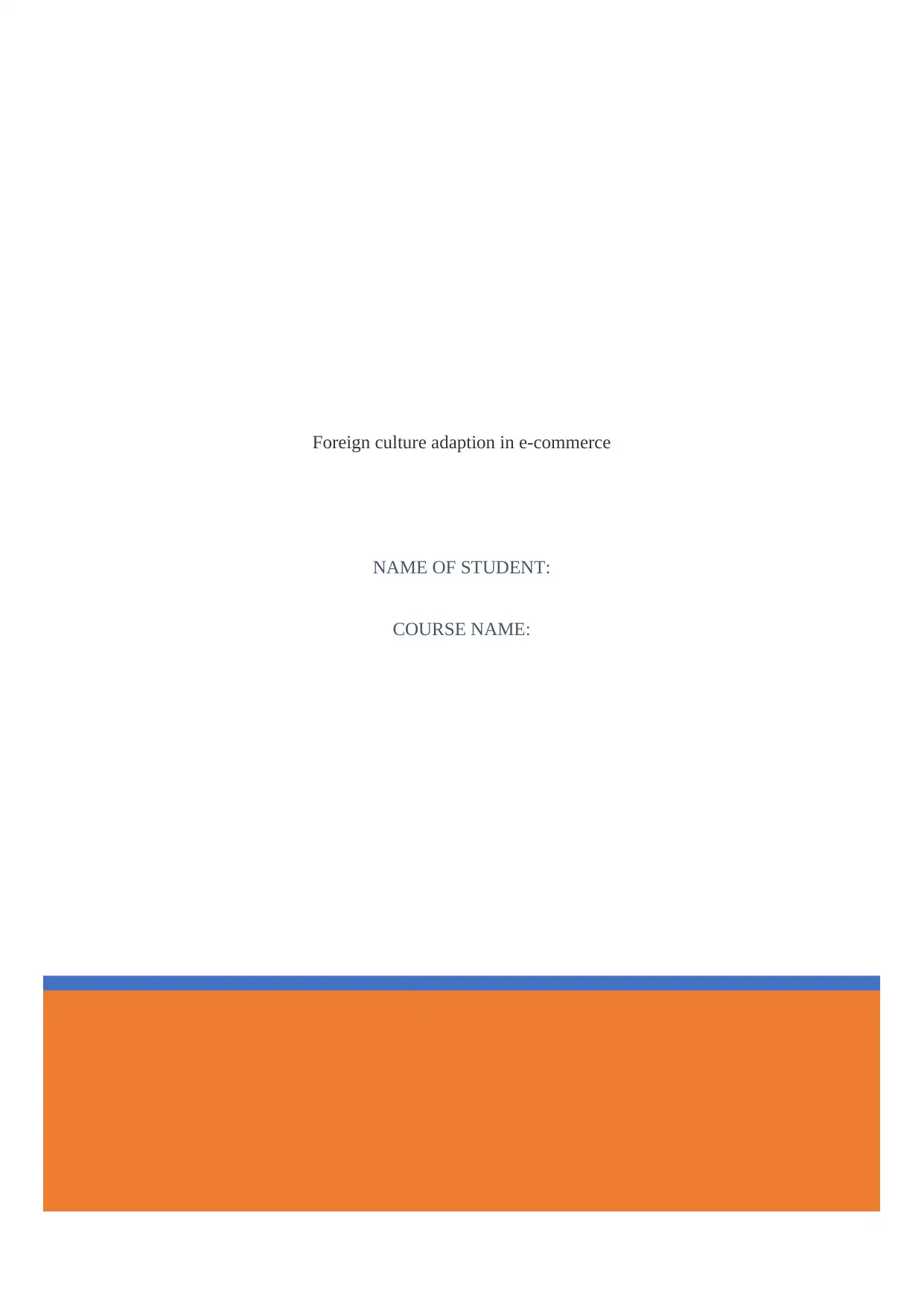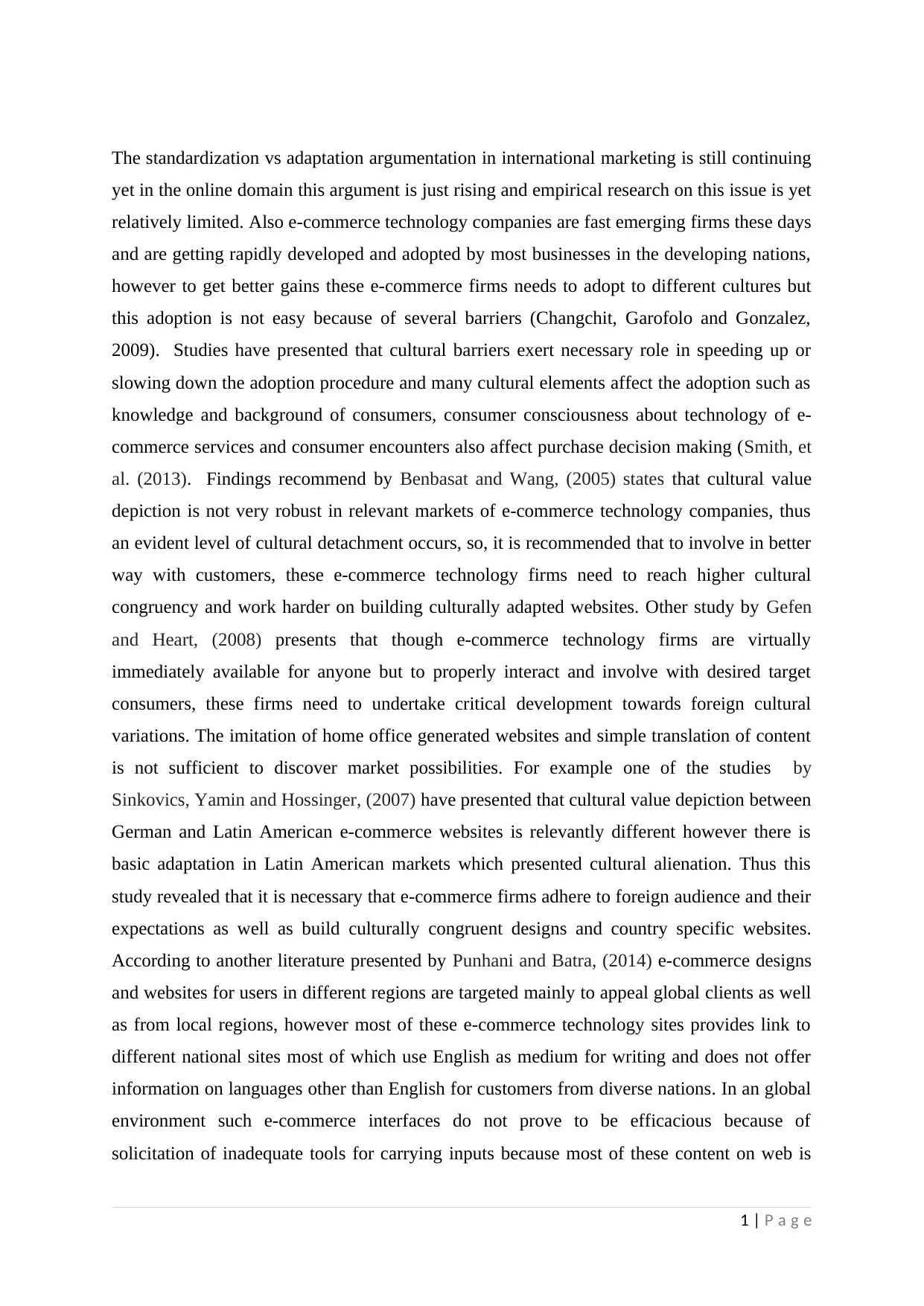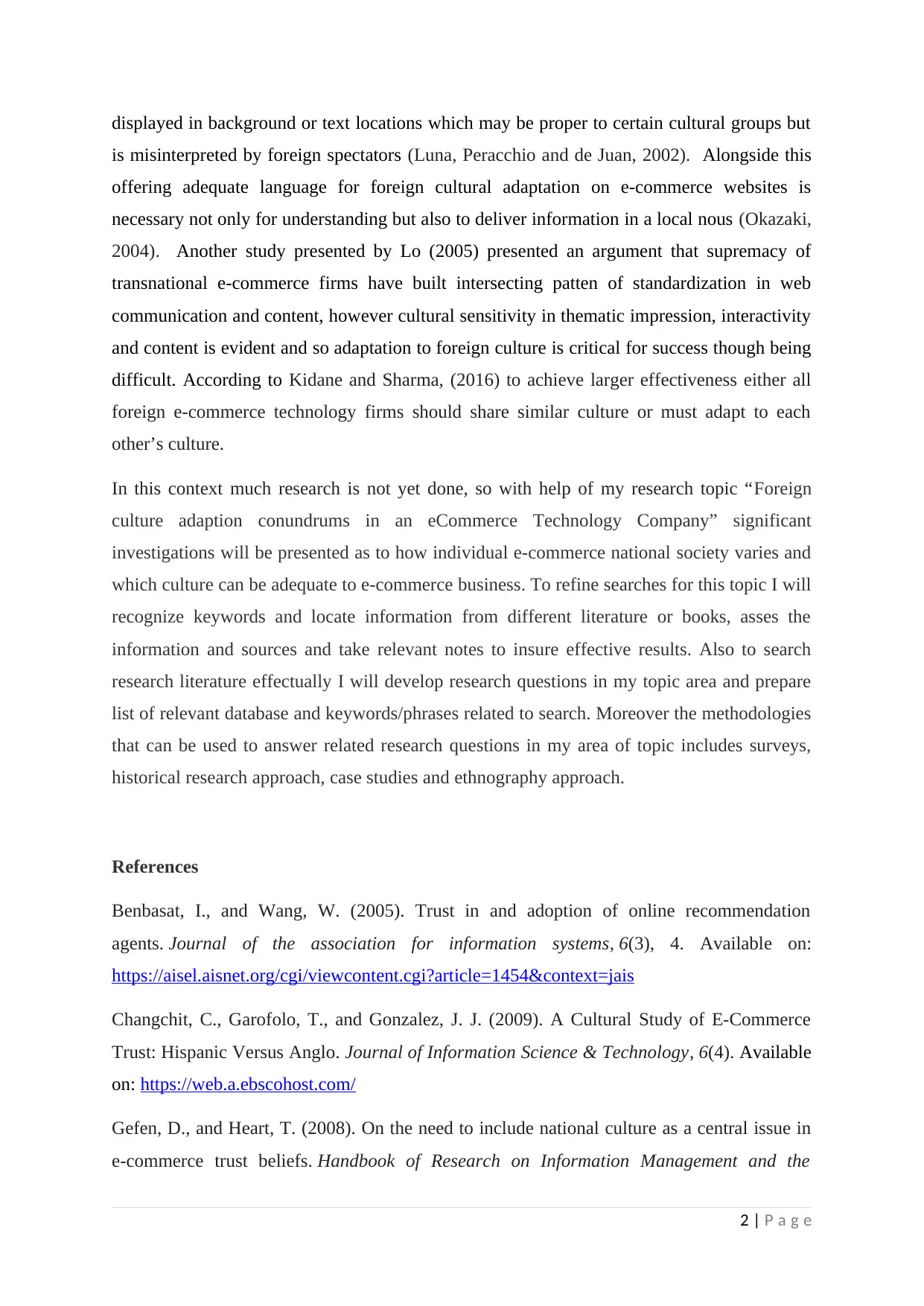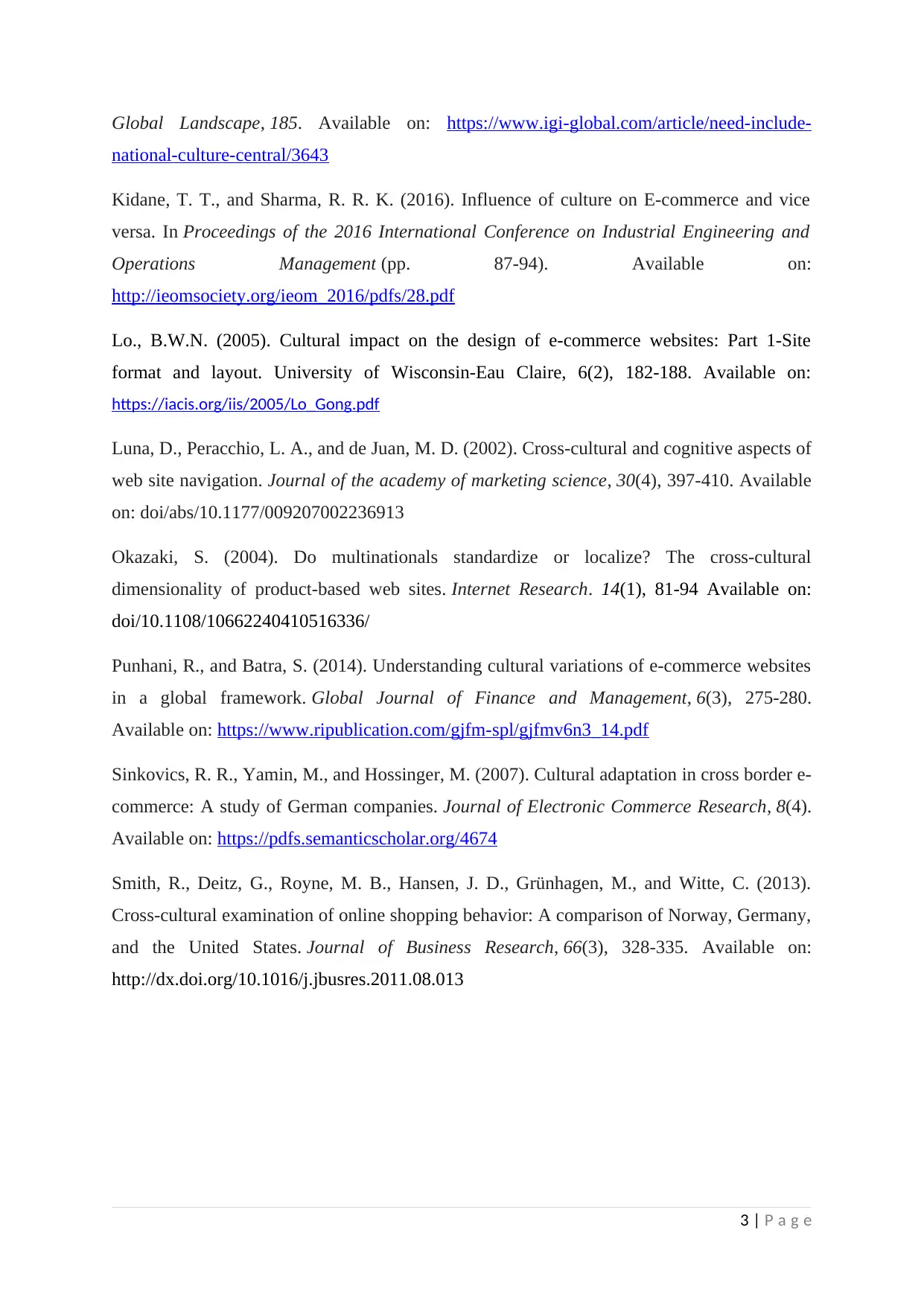Foreign Culture Adaption in E-commerce: Challenges and Strategies
VerifiedAdded on 2022/08/17
|4
|1252
|19
Essay
AI Summary
This essay delves into the complexities of foreign culture adaption within the e-commerce landscape. It highlights the ongoing debate between standardization and adaptation in international marketing, emphasizing the limited empirical research in the online domain. The paper underscores the rapid growth and adoption of e-commerce technology in developing nations and the necessity for businesses to adapt to diverse cultures to achieve greater success. The essay examines the impact of cultural barriers on consumer adoption, including consumer knowledge, technology awareness, and purchase decision-making. It draws on various studies to emphasize the need for e-commerce firms to achieve cultural congruency, develop culturally adapted websites, and consider foreign cultural variations beyond simple translations. The study also discusses the significance of offering adequate language options, culturally sensitive content, and interactive designs. The essay concludes by emphasizing the importance of understanding and adapting to foreign cultures for e-commerce firms to achieve larger effectiveness in the global market. The author will conduct further research on the topic to identify how individual e-commerce national society varies and which culture can be adequate to e-commerce business.
1 out of 4











![[object Object]](/_next/static/media/star-bottom.7253800d.svg)